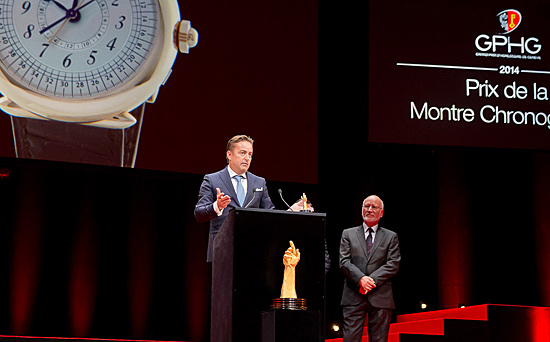Whereas the watch industry as a whole is becoming increasingly transparent, after-sales service remains a somewhat obscure area for end customers. Their watches are sent off, serviced and returned within a pretty variable time-frame. But what happens when the retailer’s shutters are down?
A watch, an operation, a location
The first step consists in determining where the service will be performed. There are two polar opposite stances on this issue, depending on whether the model in question is Haute Horlogerie or mass market. The former systematically implies sending timepieces back to their Manufacture for any interventions on their mechanism. Depending on the geographical starting point, it therefore takes four to eight days just to send the watch back and forth.
Some countries are however more complicated than others when it comes to logistics, and require more time. Many specialists mention the case of Russia and everyone tries to find their own method of controlling these lead times. “One of the options for that particular country is to synchronise with a customer’s travels,” explains Guillaume Tetu, CEO Hautlence. “When he stops off in Geneva, Paris or Miami, he hands over his watch at one of our points of sale, which then sends it to Switzerland. We then make arrangements to return it to one of the next capitals on our customer’s schedule.”

Kurt Kupper wishes he had that option, although the CEO of the Reuge hand-crafted music box company points out that “Fortunately, there is almost no after-sales service with our models, provided they are set into operation from time to time. But if an incident does occur, such as an accidental fall, or house removals done without sufficient care, we sometimes have to send someone on-site”. That naturally makes for shorter deadlines, but correspondingly higher bills if the repairs do not come under guarantee…
Finally, a last variable can help keep after-sales service to minimum: namely retailers’ intervention on models that are not yet sold. Some of them remain unwound for long periods or are subjected to extended exposure to ultra-violet rays through the shop windows. De Bethune has notably developed an innovative policy in this area: “Points of sale are required to conduct half-yearly tests on our models. Nonetheless, in case of doubt, De Bethune does a complete overhaul of the product at its own expense, in order to guarantee that the end customer purchases watches operating at their best,” says Pierre Jacques, CEO.

A watch, a movement, an exchange – in some cases
High-volume watchmaking does not always take things quite so far. According to Pierre Maret, Director of Customer Service at TAG Heuer, “During a given intervention (for a breakdown or for maintenance), and depending on the nature of the repair to be made, we may in some instances simply decide to fit a new movement”. This is a plus for the customer, who benefits from a watch that is as good as new, ultra-fast turn-around, as well as enhanced longevity of the model.
Nonetheless, such a straightforward exchange is not always feasible, notably in the case of vintage models, as Pierre Maret explains: “The whole difficulty lies in determining which models are or are not considered ‘vintage’. But we’re working on that. The 1950s, 60s and 70s are regarded as ‘vintage’ years, and we are currently taking a closer look at the period spanning the late 1980s and the early 1990s.”
When it comes to vintage models, everything depends on the nature of the repair. The whole after-sales service issue is very different in such cases, since it is no longer a matter of determining how long a model will be away being serviced, but instead whether it is indeed reparable. Pierre Maret sums up the situation: “We have a large stock of parts and we do our very best, but striking the right balance between financial and sentimental value can be a difficult decision to make for the customer. Whatever the case, we try to stick to four weeks for a recent model, and an average of 12 weeks for 80% of reparable vintage watches. “

Power reserve: a strong point that becomes a weakness in after-sales service
Nonetheless, despite their good intentions, brands simply cannot speed up certain aspects of the process. Chopard has managed to reduce turn-around times thanks to a new 3,400 sq.m. service centre in Miami. Since September 2013, the latter has been handling returns from the United States, Latin American and Caribbean region. While that is certainly a praiseworthy effort, Chopard, like all other brands, will nonetheless face certain test-related lead times that simply cannot be cut, such as for models powered by its four-barrel L.U.C 1.98 movements.
Any intervention does indeed end with a test covering one or two complete power-reserve cycles, during which the precision is measured in multiple positions and at various times. And even though there are a few watchmaking tricks serving to accelerate these tests, a Panerai Luminor 8 Days, a Blancpain, or indeed an A. Lange & Söhne 31 Days, will mathematically require longer testing during after-sales service than a model with the standard 42 hours of autonomy!

The future of after-sales service
At the end of the day, good after-sales service is about finding the best way of handling multiple constraints. But are the latter liable to evolve in the future? Definitely, in terms of sheer volume. The equation is once again quite simple: the more watches there are on the market, the more after-sales needs will grow. So tomorrow will be about maintaining reasonable lead times despite being faced with exponentially larger volumes. This will require rapid changes in the two key areas of attitudes and processes.
"Un excellent SAV prolonge et renforce l’attachement entre une marque et son client."
When it comes to attitudes, after-sales service will need to be considered no longer as a cost centre, but instead as a means of securing customer loyalty. Excellent after-sales service (or customer service as it increasingly known) is in fact a means of extending and strengthening the ties between a brand and its customers. This nonetheless involves significant investments in the recruitment of watchmakers ahead of the upcoming volumes, in systematically storing plans and tools, as well as in transport, logistics, etc.
The other eagerly awaited and necessary transformation relates to after-sales service processes. We are currently seeing the emergence of two complementary policies. The first involves a group deciding to concentrate its entire after-sales activities on a single site, thereby saving costs and rental, while fostering the sharing of experiences, simplifying workflows, and improved overall service. That is what Richemont has done in the Paris area with a large after-sales service centre for all the brands within the group.
The complementary trend is towards regional specialisation. The Franches-Montagnes is currently preparing to enter the fray. Basically, it has had come to terms with the fact that that it cannot hope to compete with neighbouring Switzerland when it comes to developing and producing watches. Nonetheless, despite its lack of financial resources and clear-cut political determination, the region can count on its talents and its expertise. It would thus logically be the nearest and most competitive catchment area to absorb the overflow of watches requiring after-sales service that Switzerland will in any case soon be unable to cope with single-handedly.








